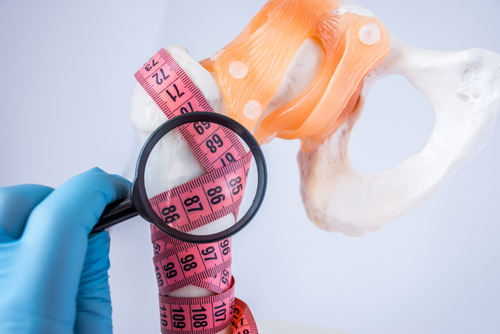Ambroxol Reverses Bone Damage, Decreases Abnormal Organ Volume in GD Type 1, Case Study Shows

Treatment with ambroxol — a medication used to treat respiratory conditions associated with excessive mucus — reversed bone damage and decreased the excessive liver and spleen volume of a 5-year-old girl with Gaucher disease (GD) type 1, a case study shows.
Titled “Ambroxol improves skeletal and hematological manifestations on a child with Gaucher disease,” the case study was published in the Journal of Human Genetics.
Mutations in the GBA gene in people with Gaucher alter the formation of the beta-glucocerebrosidase enzyme, which in turn leads to the toxic buildup of a lipid (fat) called glucocerebroside in the spleen, liver, lung, bone, and brain cells.
Ambroxol, an available cough and cold medicine, is known to boost beta-glucocerebrosidase activity. It works as a chaperone therapy, a type of small molecule that binds to faulty enzymes and helps them fold properly. High-dose oral ambroxol also has shown promise in easing the neurological symptoms of patients with GD type 3.
Enzyme replacement therapy (ERT) has been the mainstay treatment for people with GD type 1. It has led to significant improvements in complications such as the abnormal enlargement of abdominal organs, called hepatosplenomegaly, and blood disorders. However, “it has shown limited efficacy to the progressive skeletal manifestations in GD,” the researchers said.
A team from China now described the case of a 5-year-old girl with complaints of severe pain in both legs, which restrained her from walking independently. According to her parents, the child had intermittent GD-related bone crises over two years. These were worse in the winter and eased upon several days of rest.
Clinical examination revealed enlargement of the girl’s spleen and liver. Imaging showed that both femurs, or thighbones, had aseptic necrosis, meaning that the bone tissue had died due to lack of blood supply. Aseptic necrosis is a well-known skeletal complication in GD.
Results of a bone marrow biopsy and a measurement of beta-glucocerebrosidase activity levels were consistent with a diagnosis of GD. Genetic testing showed the girl had two distinct mutations in the GBA gene.
Given her age and manifestations, ERT and substrate reduction therapy were both contraindicated. After obtaining parental consent, doctors enrolled the patient in a compassionate use clinical protocol for ambroxol.
The girl received up to 15 mg/kg of daily ambroxol for three years without any side effects. No further bone crisis was seen after treatment initiation. Importantly, ambroxol reduced liver and spleen volume, and slightly increased white and red blood cell counts after two years.
In addition, disease severity gradually decreased after almost three years, as measured by the blood activity of chitotriosidase, a GD biomarker.
Annual imaging also showed a reversal of damage in the top part of the girl’s femurs, allowing the near-normal growth of the femoral heads.
Cellular assays revealed increased activity of beta-glucocerebrosidase in the patient’s lymphocytes, a type of white blood cell. The scientists suggested that ambroxol’s small size might contribute to its efficient penetration into bone tissue as indicated by the observed skeletal improvements.
“In conclusion, this is the first report describing the therapeutic effects of oral ABX [ambroxol] on the bone and hematological manifestations of a child with an established [GD1],” the scientists said.
“Randomized and controlled clinical trials are necessary to further assess and confirm these findings,” they added.


